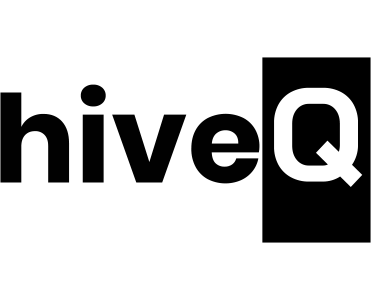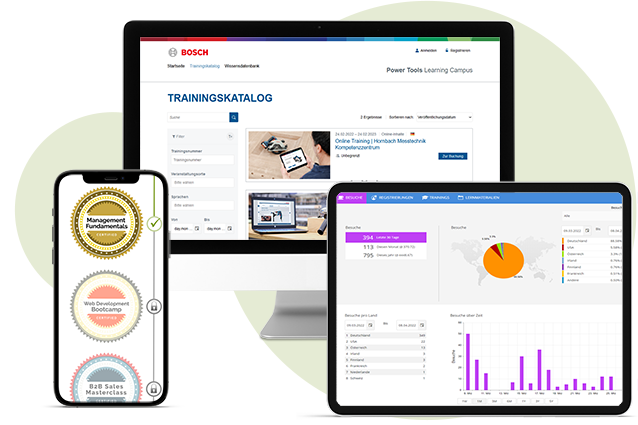Example 4: Online Training Onboarding
Previously: The company K-Tech organizes an onboarding with new employees twice a year. The onboarding is a two-days face-to-face event to which employees come together from all branches throughout Germany. At the end of the year, it became apparent that the spring date was very poorly attended and that many interested employees could not participate on the fall date due to capacity constraints (trainers and location).
Now: K-Tech created a high-quality online onboarding training, in which the various departments introduce themselves and the new employees are interactively challenged to engage with the company. New employees can do this online training at a freely chosen time and place. The company’s branches in Great Britain, China and Brazil also showed interest in the online onboarding training, so the training is now already available in three different languages.
How does this example affect processes, data and people?

- Fast reaction time: Training can quickly be made available to a large target group
- Standardization: Online training is created centrally and standardized for all subsidiaries
- One-time creation process of online training and updates as needed

- Daily information about training activities and learning success
- Training is scalable as it is unrestricted in use

- Users are autonomous: they can access the training regardless of time and location
- Immediate start of onboarding is possible, regardless of workplace
- Users are qualified in the same way everywhere, regardless of workplace
- Ideal case: users can complete training in their native language
Example 5: Customer Experience
Previously: The employees of K-Tech have access to the trainings through the training catalogue. Based on descriptions and prerequisites, employees decide which trainings are suitable and relevant for them. Then, they contact HR and express their interest in a course.
Now: After logging into the company’s LMS, employees access their personal learning area. There, they can see an overview of upcoming courses, completed courses and recommendations for future training. They can access online training sessions, learning resources, virtual classrooms and other contents in the knowledge database at any time, can filter them, rate them and mark them for later. Their learning progress is saved and they can easily return to the last page they worked on. In their personal learning area, employees can also access their certificates.
How does this example affect processes, data and people?

- Learning process is continuous, not limited to face-to-face trainings
- Registration process is simplified and centralized

- Individualized course recommendations thanks to available data on previous knowledge, completed trainings and interest
- Use of documented activities on the LMS with other company data
- Content and training are available on the platform 24/7

- Self-organized and autonomous employees
- Employees need digital competencies to use the LMS as users








